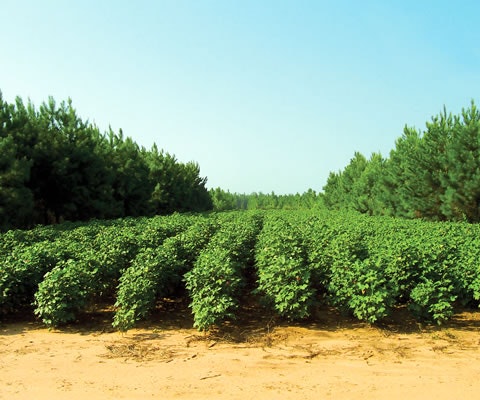Alley Cropping
Alley Cropping is a practice where trees and shrubs are planted in wide rows, creating "alleys" where annual/perennial crops are grown. Benefits of alley cropping include:
- Increased biodiversity on multiple levels as the types of plants that are grown is diversified, so are the animals that are attracted to an area. This biodivsersity creates a more resilient sytem in which there is lest vulnerability to pest pressure and unpredictable weather events.
- Improved soil health due to the ecosystem functions that trees provide: including increased organic matter in the soil and fertility.
- Income diversification through a number of income streams: whether it's lumber, sap, fruit, forage or annual crops in the alleys, etc.
- Erosion control and water management because of the ecosystem services that trees provide with their roots holding soil in place, encouraging mycelium networks and imroving water infiltration. The more water that infiltrates the group, the less surface water runoff there will be.
Attached here is the spec sheet from the National Resource Conservation Service (NRCS), detailing the practice standards:
Alley_Cropping_311_CPS_Oct_2017.pdfLinked below is an informative, quick video introduction to riparian forest buffers:
Here are some photos of various successful alley cropping systems:

Credit to USDA Forest Service

System consisting of pine trees and cotton. (Photo courtesy of Shibu Jose)

System consisting of chestnuts and raspberries. (Photo courtesy of Tracey Coulter)

System consisting of chestnuts and winter wheat. (Photo courtesy of Mike Gold)




